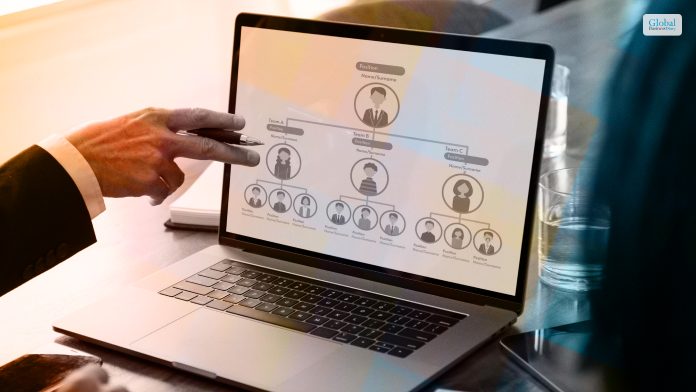Functional Organizational Structure – What Is It, And How Does It Work?

A functional organizational structure is a team structure within an organization where the organization groups its employees into various departments based on the expertise of the employee. This is one of the most common types of organizational structure in business and is mostly seen in larger companies. Here, the company groups its employees based on their performance, functions, and capabilities.
In this article, you will also learn about what a functional organizational structure is and how it works in a business organization. Next up, we will elaborate on this using a simple example based on this organizational structure. Finally, we will discuss the major pros and cons of having such an organizational structure for business. Hence, to learn more about this structure, read on through to the end of the article.
What Is A Functional Organizational Structure?
According to Indeed.com,
“A functional organizational structure is a common type of business structure that organizes a company into different departments based on areas of expertise, grouping employees by specialty, skill or related roles. It’s based on levels of hierarchy that include different departments, under the direction of designated leaders.”
Most businesses operate with the use of the functional organizational structure. This is because this organizational structure groups the employees of the organization based on their expertise, capabilities, and knowledge. This helps companies achieve their goals in an efficient manner when they use this structure within a team environment.
A major example of a functional organizational structure includes different departments in an organization, where the employees are grouped based on their skills and capabilities. Some examples of such departments include the marketing department, sales department, production department, HR department, etc.
This type of structure is a vertical management structure. Here, if you take each department and observe, you will find out that the employees of each of these departments communicate only with each other and their respective leaders. Subsequently, the leaders of these departments will report to their respective managers, who then will report to the company’s top management.
Read More: What Is Social Entrepreneurship? – Steps To Become A Successful Social Entrepreneur
How Does A Functional Organizational Structure Work? – Example
Regarding this organizational structure, the Human Capital Hub states –
“Businesses typically utilize functional structures because it groups individuals with comparable knowledge and, when used in a team setting, helps organizations achieve their goals. It is a sort of organizational structure in which the organization is divided into smaller units based on specific functional areas such as information technology, finance, human resources, or marketing.”
This structure basically recognizes individual employees based on their skills, qualifications, expertise, and related roles. The business is organized as per layers of hierarchy. In each of these hierarchical structures, you will find several departments with authorized leaders leading them.
Since individuals with different abilities and expertise come together in each of these functional organization structures, the structure itself allows a higher efficiency of operation.
However, one of the major problems of this organizational structure is that the functional groups of this organization might not interact with each other. This leads to negative competition and a lack of communication between departments. In this case, the matrix organizational structure comes to the rescue.
The following are some of the major characteristics of a functional organizational structure:
- This deals with a vertical management structure.
- The business organization divides itself into different functional departments. In each of these departments, there are employees who are specialized in specific tasks.
- Each of the functional departments works in silos, as each of these has their own management structures.
- Employees report to their respective leaders, who, in turn, report to their managers in the department.
- Employees typically communicate within their respective departments rather than interacting with employees of other departments.
- The managers of each department report to a higher management in another functional leadership structure.
- In some cases, managers of different departments interact with each other at times of need.
Functional Organizational Structure – Major Pros And Cons
According to AccountingTools.com,
“The functional organizational structure is the dominant mode of organization in larger companies, since these entities deal with such large sales and production volumes that no other form of organizational structure would be nearly as efficient.”
However, like every organizational structure, the functional organizational structure has its own pros and cons, which a business must have a full idea of. Here are they:
Pros Of A Functional Organizational Structure
The following are the major pros of a functional organizational structure that benefits organizations a lot:
- Since the structure contains groups of individuals by duties and capabilities.
- There is autonomy for groups, but the management works as a point of contact between functional structures.
- People are groups as per their specialization. Hence, this assures the specialty of departments.
- Due to specialty and expertise in departments, along with good intra-departmental communication, the speed of operation is high.
- It ensures clarity and accountability within each of the departments within the organization. Hence, there is better utilization of time and resources.
- It helps in lightening the workload of the senior members of the organization.
- This structure helps in developing executives.
- There is more scope for expansion of the organization, as the competencies are high.
- There is better control and oversight of the enterprise due to the presence of expertise and specialized knowledge.
Cons Of A Functional Organizational Structure
Here are some cons of the functional organizational structure, which you must be aware of while you implement it:
- Team silos are created, and hence there is less interaction between departments.
- Common bonds weaken.
- Inter-departmental coordination weakens.
- Limited perspectives.
- There can be territorial conflicts.
- Delays in decision-making, as things are too structured.
Final Thoughts
You will need to implement the functional organizational structure as your business grows. Having separate departments for your IT Staffing and other areas will become a need. The functional manager(s) will need to work with the managers of all the departments so as to coordinate the tasks. The command chain is clear both within the departments and outside them.
The management structure frequently utilizes specialized resources and standardized processes. However, there can be departmental silos and slowdown of decision-making due to the presence of hierarchy. What is your opinion regarding this management structure? Share your thoughts and opinions with us in the comments section below.
Read Also:













